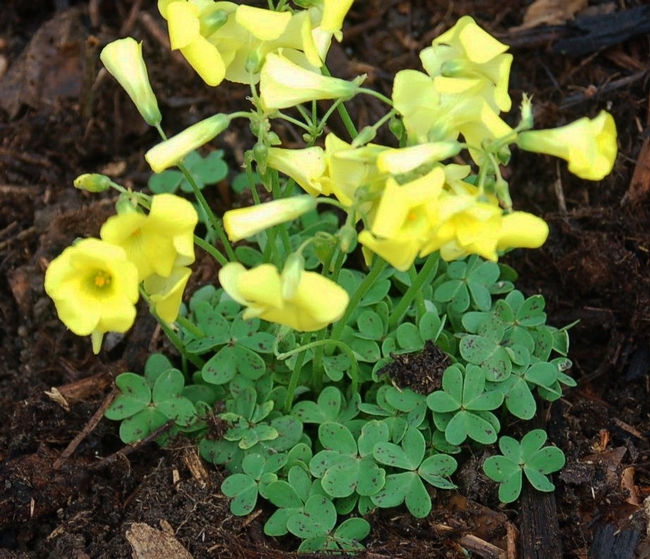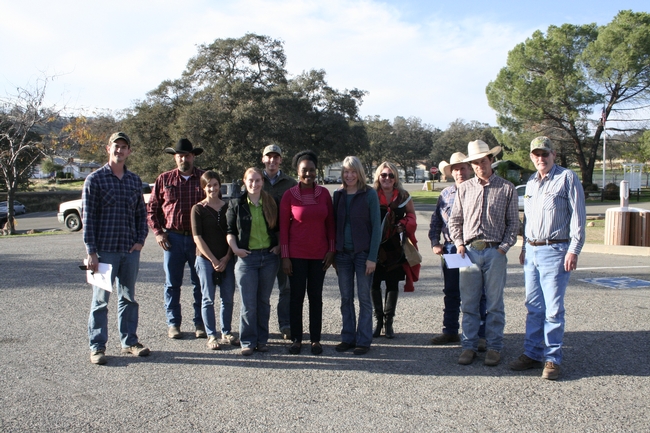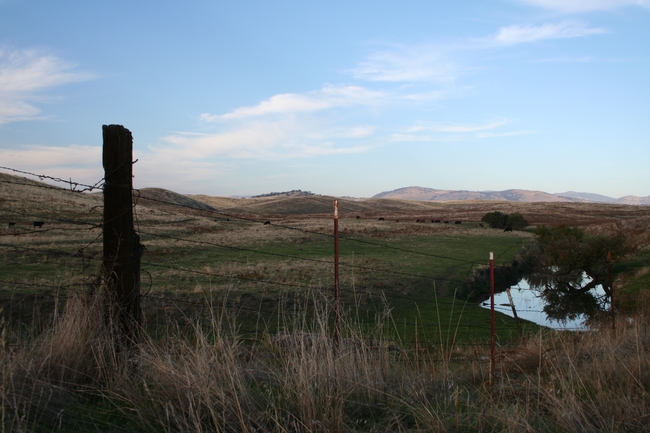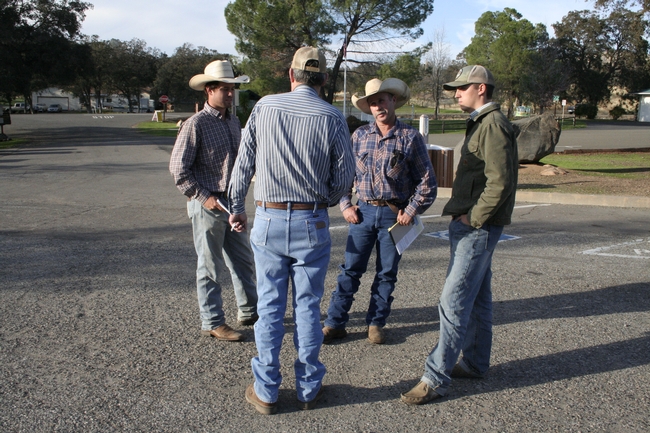Posts Tagged: grass
Grass-fed beef production a possible money-maker for Central California ranchers
The health benefits of grass-fed beef are well documented. Meat from cattle that live out their lives grazing on rangeland before being processed has more beta-carotene, vitamin E and omega-3 fatty acids than the meat from animals finished at feed lots.
The health benefits – and for some consumers, the idea that cattle raised on the range have longer, happier lives than conventional beef cattle – increases the value of the product. Grass-fed beef generally sells for 60 percent more per pound than standard beef. These potential premium prices get cattle ranchers' interest, and therefore captured the attention of UC Cooperative Extension rangeland advisor for Mariposa and Merced counties Fadzayi Mashiri.
Two major challenges face ranchers who wish to produce grass-fed beef: the lack of local processing plants, and the unfamiliar marketing strategies that successfully selling a niche product demands.
“I decided to bring ranchers together to discuss these issues,” Mashiri said. She formed a group that meets regularly in Mariposa County to discuss how they might be able to work as a team to break into the grass-fed beef market. Mashiri sees this project as an opportunity for the ranchers to diversify their sources of income and increase profit margins.
“Farm to fork is getting big,” said Marshall Long, a Mariposa County supervisor and rancher who attended the meeting this fall. “I want to keep those value-added dollars in the county.
Most of the ranchers in the valley and foothill counties of Merced, Mariposa, Madera and Fresno have cow-calf operations. After calves are born on the range, they stay on the land for about a year before being sold at auctions and fed grain or other high-carbohydrate feeds in feedlots. In grass-fed production, yearlings aren't sold, but rather kept on the land for another two years before they are processed.
The meat can be quite different. Grass-fed cattle produce meat with a distinctive flavor, less marbling, and a yellow cast. And, it commands a higher price.
Mashiri invited Tara Schiff, the grant coordinator with the Mariposa County Chamber of Commerce, to the recent grass-fed beef planning meeting. Schiff spearheaded the development of a “Made in Mariposa” marketing brand. The initiative has more than 100 members, including local producers of vegetables, cider and wine.
“We have strength in numbers,” Schiff said.
Made in Mariposa is a potential marketing partner, or represents a model for local beef producers to emulate.
“If we think big, how big do we want to be?” Mashiri asked. “Can we work together to relieve individual producers of the pressure of selling on their own?”
The producers concluded that their next step would be a market study to determine whether stores and restaurants would be willing to pay for a ready supply of grass-fed beef. Schiff of Made in Mariposa and Mashiri will identify grant opportunities that would allow the group to move forward with the study.
Under Mashiri's leadership the ranchers will come together again in the spring to continue their planning work together to increase their businesses' bottom lines by diversifying into the production of a specialty meat product.
Grasshopper BOLO (Be On the Look Out)
Just this week it was announced by the Solano County Agriculture Commissioner, Jim Allan, that the northwest portion of Solano County is being inundated with grass hoppers. The area under attack is from Cherry Glen to the county line. There are people reporting the presence of a large number of grasshoppers eating their plants. Samples of the pest were taken for identification, but it's thought these grass hoppers are the Devastating Grasshopper or another grass hopper that is closely related.
So far, the pests aren't bothering the farm crops, but unfortunately are causing significant damage to homeowners plants. Grass hoppers will basically eat any plant that is in their wake.
The grass hopper is difficult to control, and only licensed professionals can use the pesticides that might control them. It's basically turned into a waiting game until they are done with their life cycle. There is more information on the UC IPM (UC Integrated Pest Management) website about grass hoppers, click here for that information. Here is a link to a printable handout with information about the biology and control of the pest.
So be on the lookout for this pest and good luck!

Grasshopper found in Pleasants Valley. (photos by Jim Allan)

Yucca ravaged by grass hoppers.
Sour Grass is a Pain in the...!
I know it’s spring regardless of the weather. The oxalis (Oxalis stricta) also known as yellow wood sorrel, is trying to take over ... and doing an excellent job of it.
The pretty little yellow blossoms we called sour grass when I was growing up are not nearly as much fun to taste as they once were. They are decidedly less welcome now that I’m an adult trying to keep them from commandeering every available spot in my yard. They even come right up through the sand in the sandbox.
An herbaceous perennial, oxalis is found in fields, wooded areas and of course, our lawns and flower beds. The word “perennial” means it may go away for awhile when the weather’s really cold or really hot, but when conditions improve Oxalis is ready for duty. It can discourage the most fervent gardener.
Most of us spend at least some time pulling it out of the ground. It responds cheerfully by coming back better than ever. Digging it out is marginally more effective but the digging may need to go much deeper than we think to get every part of the plant. I tried sheet mulching a few years ago, which showed promise. Unfortunately, the area I covered was circular and I learned the hard way the importance overlapping the cover material. A circular design requires careful overlapping of layers to assure absolutely no light reaches the plants.
Oxalis has an uncanny ability to pop up a new plant just as you stop to admire an otherwise weed-free garden. Maybe it’s best to bow to the inevitable and cultivate an appreciation for that bright yellow presence with its shamrock leaves. After all, St. Patrick’s Day is just around the corner!

Oxalis stricta. (photo by Marime Burton)
Lack of local slaughterhouse enlarges footprint
The efforts of grass-fed beef producers in Northern California to shrink their carbon footprints are frustrated by the need to truck animals long distances to the nearest slaughterhouse, according to an article in today's Santa Rosa Press Democrat.
“There just aren't enough of these smaller plants people can go to,” the article quoted John Harper, UC Cooperative Extension livestock farm advisor in Mendocino County.
The story said Harper is working on a slaughterhouse project with Mendocino County ranchers, community members and economic development officials. They're hoping to attract an investor willing to build one.
Small meat-processing facilities used to be commonplace all over the country, Harper said, but most have disappeared. Ukiah's last slaughterhouse closed almost 50 years ago. Four large corporations now process 85 percent of the nation's cattle, most of which are finished in feedlots eating grain.
To reach remote producers, USDA promotes mobile slaughterhouses. However, Harper told reporter Glenda Anderson that the mobile alternative isn't feasible for Mendocino County. State law makes it illegal to bury the inedible and unusable parts of butchered animals, so the mobile facility presents a disposal problem.
Four years ago, a Marin County investor proposed building a meatpacking facility in the Ukiah Valley, but the plan was dropped because of local opposition. Opponents feared the facility would emit an unpleasant odor, the story said.
“I learned really quickly the public doesn't know the difference between a feedlot and a meat-processing plant,” Harper was quoted.
The facility being promoted would not include a feedlot, which generates the odor people mistakenly associate with slaughterhouses, Harper said. After one study and public outreach, Harper believes that objections to a local slaughterhouse now are limited to people who don't believe animals should be killed for food.

Beef grazing grassland.
PopSci pursues the perfect lawn
Popular Science, the world's largest science and technology magazine, spotlighted the work of UC Riverside Cooperative Extension turf scientist Jim Baird in its May 2010 "Statistically Speaking" feature. Titled "The Perfect Lawn," the full-page story said Baird is bioengineering grass that drinks less water and still earns praise for its lush, emerald green appearance.
"The process is sort of a gladiator academy for grass," PopSci says. The scientists grow promising hybrids, then turn off the water to see which ones survive.
The article opens with statistics on turf grass' ability to sequester carbon. U.S. lawns, it says, could trap enough carbon each year to offset the emissions from burning 1.9 billion gallons of gasoline. However, it takes 7 billion gallons of water a year to keep the grass green.
Other statistics in the feature were:
- 625 square feet - Area of lawn needed to make enough oxygen for one person for one day
- 1.57 billion hours - Time homeowners spend mowing the lawn per year
- 37 billion pounds - Carbon dioxide that residential lawns can store per year
- 800 million gallons - Amount of gas guzzled by lawn mowers annually
- 33,000 square miles - Area of the U.S. covered by residential lawns

Jim Baird





